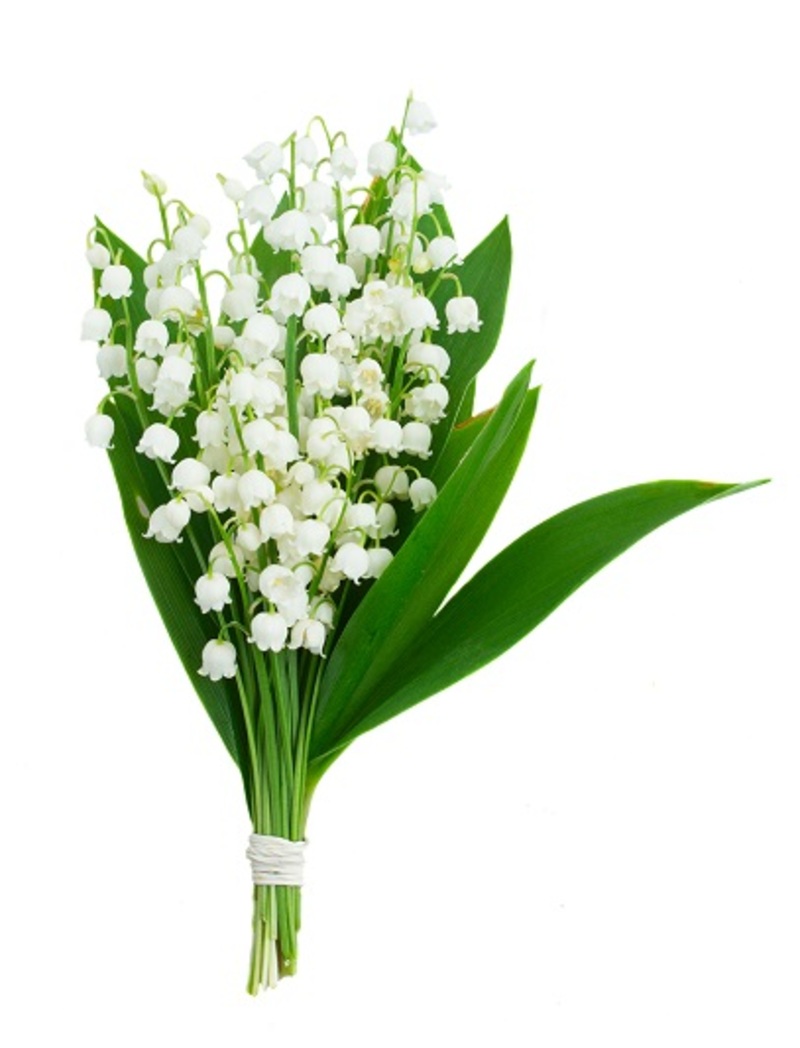Hydrangea Mastery: Tips for Healthy Plants
Posted on 13/08/2025
Hydrangea Mastery: Tips for Healthy Plants
Hydrangeas are some of the most beloved garden plants, celebrated for their showy blooms and versatile growth habits. Nurturing healthy hydrangea plants requires a deeper understanding of their needs and proper care techniques. In this comprehensive guide, we'll provide you with all the essentials for Hydrangea Mastery, covering everything from soil selection to pest management so your hydrangeas thrive season after season.
Understanding Hydrangeas: Varieties & Growth Patterns
Before diving into tips for robust hydrangeas, it's important to recognize which variety you're growing. There are several main types of hydrangeas commonly found in gardens:
- Hydrangea macrophylla (Bigleaf Hydrangea): Famous for their blue or pink globe-shaped flowers.
- Hydrangea paniculata (Panicle Hydrangea): Features cone-shaped blooms, often white turning pink or lime as they mature.
- Hydrangea arborescens (Smooth Hydrangea): Known for their large white flower heads typically seen in 'Annabelle' varieties.
- Hydrangea quercifolia (Oakleaf Hydrangea): Recognizable by their oak-like foliage and white cone-shaped flowers.
- Climbing Hydrangeas (Hydrangea petiolaris): These can scale walls or trellises and produce stunning white blooms.
Identifying your hydrangea type will help tailor your care approach, ensuring you maximize flower production and plant health.

Essential Tips for Growing Healthy Hydrangeas
1. Choose the Right Location
Hydrangeas require a balance of sunlight and shade for optimal growth. Most thrive in locations where they receive morning sun and afternoon shade, especially in hotter climates. Too much shade can reduce blooming, while too much afternoon sun can scorch the leaves and stress the plant.
- Bigleaf (macrophylla) and Oakleaf (quercifolia) hydrangeas prefer filtered sunlight or dappled shade.
- Panicle (paniculata) hydrangeas can tolerate more sunlight than other types.
- Assess your garden's microclimate for wind exposure, which can dry out or damage leaves and blooms.
2. Soil Preparation and Amendment
Healthy hydrangeas require well-drained, fertile soil that retains moisture but does not become waterlogged. Incorporate plenty of organic matter such as compost, leaf mold, or well-rotted manure into the planting area.
- Soil pH affects bloom color - particularly for macrophylla (Bigleaf) types. Acidic soils (pH below 6) produce blue flowers, while alkaline soils (pH above 7) yield pink blooms.
- For neutral white blooms, choose varieties like Annabelle or Limelight.
- Test your soil's pH using a home kit and adjust as needed with garden sulfur (to lower pH) or lime (to raise pH).
Tip: Hydrangeas dislike "wet feet." If your soil tends to be heavy or clay-rich, plant hydrangeas in raised beds or mounds to improve drainage.
3. Planting Hydrangeas Correctly
Whether planting new shrubs or relocating established ones, follow these best practices for healthy hydrangea establishment:
- Dig a hole twice as wide and equal to the depth of the root ball.
- Gently tease out roots if pot-bound.
- Position the shrub so the top of the root ball is level with the ground.
- Backfill with amended soil and water thoroughly to remove air pockets.
Spacing: Space hydrangeas according to variety. Bigleaf, oakleaf, and panicle types typically need 3-8 feet of room to allow adequate air flow and minimize disease risk.
4. Watering Wisely
Hydrangeas are infamous for their water needs, especially during periods of active growth and blooming. Consistently moist (not soggy) soil is key to their success.
- Provide approximately 1-2 inches of water per week from rainfall and irrigation combined.
- Deep watering every few days is preferable to frequent shallow sprinklings.
- Add 2-3 inches of organic mulch around the base (but not touching the stem) to retain moisture and suppress weeds.
Telltale sign of thirst: Hydrangea leaves will wilt noticeably when the plant is dry, but should perk up with a good soak!
5. Fertilizing for Maximum Blooms
Hydrangea success depends on proper nutrition. Excess fertilizer can actually limit blooming and cause lush foliage at the expense of flowers.
- Fertilize in early spring with a balanced slow-release fertilizer (10-10-10 or 12-4-8 work well).
- Supplement with a mid-summer boost for repeat bloomers if needed, but avoid feeding after August to prevent tender growth before winter.
- Use organic options like compost, aged manure, or fish emulsion for a gentler approach.
Avoid high-nitrogen fertilizers, which encourage leaves at the expense of blooms -- especially for bigleaf hydrangeas.
6. Pruning Practices by Variety
Proper pruning is crucial to achieve healthy hydrangea bushes that flower year after year. The right technique depends on the variety:
- Bigleaf (macrophylla) and Oakleaf (quercifolia): Prune immediately after flowering. These types bloom on "old wood" (last year's growth). Remove spent blooms and shape lightly, avoiding harsh cuts that reduce next year's blossoms.
- Smooth (arborescens) and Panicle (paniculata): Prune in late winter or early spring before new growth emerges, as they flower on new wood.
- Climbing hydrangeas: Pruning is seldom needed aside from removing dead or overgrown branches after flowering.
Always use sharp, clean pruners to protect the plant from disease entry. Remove dead wood and crossing stems to improve airflow and prevent disease.
7. Controlling Pests and Disease
Healthy hydrangeas are generally pest-resistant, but certain issues can arise, especially under stress:
- Aphids and spider mites: Dislodge with a forceful water spray or use insecticidal soap.
- Slugs and snails: Handpick, set out traps, or use diatomaceous earth to protect young, tender shoots.
- Fungal diseases: Watch for leaf spots and powdery mildew in humid or densely planted locations. Thin plants for airflow, water in the morning, and use organic fungicides if necessary.
- Root rot: Often a result of poor drainage. Raise beds or amend soil to improve drainage and prevent standing water.
Regular inspection is key. Early action prevents small problems from becoming major setbacks in your hydrangea garden.
Advanced Hydrangea Care: Encouraging Lush Blooms
Adjusting Bloom Color (For Bigleaf Hydrangeas)
The legendary blue and pink flowers of bigleaf hydrangeas can be influenced by soil pH and available aluminum. To master hydrangea color manipulation:
- For blue flowers: Lower soil pH with garden sulfur or aluminum sulfate. Make sure aluminum is present in the soil.
- For pink flowers: Raise soil pH by adding lime. Aluminum must be unavailable for the pink color to form.
- Apply soil amendments well before flower buds develop (late autumn or early spring) for best results.
Note: White hydrangea varieties cannot change color regardless of soil pH, but their blooms look stunning with regular feeding and proper care!
Extending the Bloom Season
With the right choices and care, many hydrangeas can be spectacular from early summer well into fall. Here's how:
- Choose reblooming varieties like Endless Summer or Blushing Bride for extended flower displays.
- Deadhead (remove spent flowers) regularly on smooth, panicle, and reblooming macrophylla types to promote more blooms.
- Feed with compost or a gentle fertilizer midway through the season for a late flush.
Winter Protection for Hydrangeas
Most hydrangeas are cold hardy, but bigleaf and oakleaf hydrangeas may require winter protection in colder climates:
- Apply mulch in late fall to insulate roots. Composted leaves, straw, or pine needles are effective and feed the soil as they decompose.
- If late spring frosts are a risk, cover new buds with burlap or frost cloth overnight.
- Try to site sensitive varieties in protected areas away from winter winds or use a windbreak barrier.
Tip: **Never prune bigleaf hydrangeas in late summer, fall, or winter** -- you'll remove next year's flower buds!
Common Hydrangea Problems and Solutions
Why Isn't My Hydrangea Blooming?
This is a frequent frustration. Hydrangea blooming problems are usually caused by:
- Pruning at the wrong time (cutting off next year's buds!)
- Frost damage to early buds in spring
- Excess nitrogen fertilizer
- Too much deep shade or not enough light
- Plant is too young (some varieties take 2-3 years to mature fully)
Solution: Check your pruning schedule, move plants to a sunnier spot, moderate fertilization, and be patient with young shrubs.
Leaves Turning Yellow or Brown
Yellowing leaves can indicate:
- Overwatering or poor drainage (often affects lower leaves first)
- Underwatering - check for drooping, dry soil and crispy edges
- Nutrient deficiencies -- feed with a balanced fertilizer or supplement with iron if chlorosis is diagnosed
Brown edges are often caused by excessive sun or wind exposure. Provide afternoon shade and avoid sites with harsh, drying winds.
Leaf Spots and Blight
Hydrangeas are sometimes troubled by fungal pathogens, especially in humid or rainy summers:
- Remove affected leaves and clean up garden debris regularly.
- Space plants properly to increase air circulation.
- Water at the base of the plant to avoid splashing leaves.
- Apply an organic fungicide if needed, following label directions.
The Rewards of Hydrangea Mastery
Learning the art of hydrangea care transforms your garden with lush foliage and jaw-dropping blooms. With these tips for healthy hydrangeas, you can enjoy thriving shrubs season after season, no matter your gardening experience level. Remember:
- Select the right hydrangea type for your climate and garden space
- Amend soil based on your plant's needs and desired bloom color
- Water consistently and mulch for healthy roots
- Prune according to type and promote air circulation
- Watch for pests and diseases and act quickly
- Feed in spring and after flowering for robust growth
Hydrangea mastery is built on observation, care, and a little patience. Over time, your experience will reward you with plants that bloom exuberantly and remain garden showstoppers for years to come. Happy gardening!

Frequently Asked Questions: Hydrangea Mastery
How often should I fertilize hydrangeas?
Hydrangeas benefit from a balanced fertilizer in early spring, with an optional light feeding in midsummer for repeat bloomers. Avoid feeding after late summer, especially in colder regions.
Can hydrangeas grow in containers?
Yes! Many varieties (especially compact types) do well in pots. Use a rich soilless mix, fertilize frequently, and water often as containers dry out more quickly.
When should I transplant hydrangeas?
Best practice is to move hydrangeas in early spring or late fall when they're dormant. Water deeply and mulch after moving.
How do I get blue hydrangea flowers?
Lower your soil's pH to 5.2-5.5 by applying garden sulfur or aluminum sulfate in autumn or very early spring. It helps to use rainwater, as tap water is often alkaline.
Conclusion: Your Path to Hydrangea Mastery
Hydrangeas are an unrivaled focal point for any garden, balconies, or patios. By following these expert hydrangea care strategies, including soil preparation, proper watering, and effective pruning, you'll unlock the full potential of these captivating plants. Remember, observation and timely intervention are the hallmarks of a hydrangea master. Happy planting, and may your garden burst with healthy, beautiful hydrangeas for years to come!
Latest Posts
Unpacking the Romance of Red Roses for Valentine's Day
Hydrangea Mastery: Tips for Healthy Plants
Poinsettia Longevity: Cultivating Lasting Vibrancy
Discover New Heights in Orchid Care Mastery
Let Your Birth Flower Guide You to Self-Discovery and Insight





